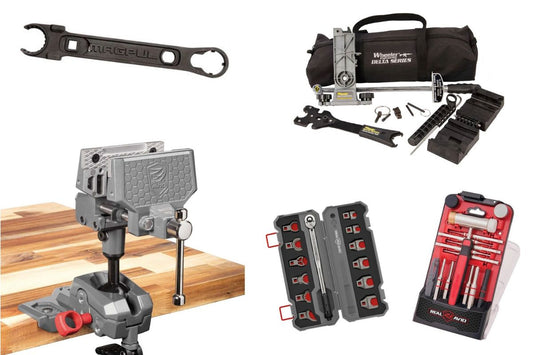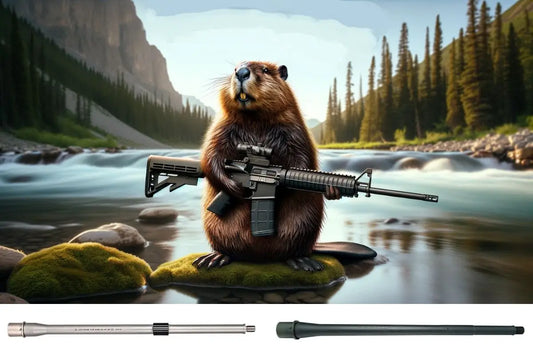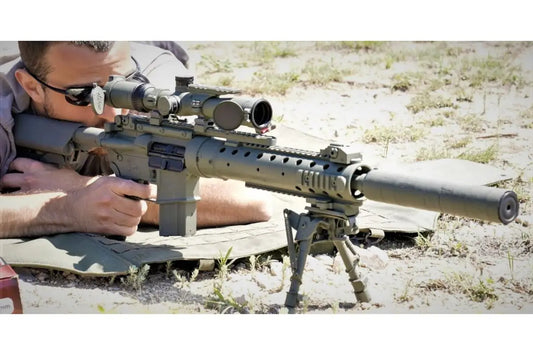
Red vs. Green Laser Sights (2025 Buyer's Guide): Which Color Wins for Carry, Carbine & Competition?
TL;DR for Skimmers
- Daylight visibility: Green looks brighter to the human eye; pick green if you shoot outdoors a lot.
- Runtime/cost/size: Red is usually cheaper, smaller, and sips battery. Green tends to cost more and draw more power (though newer 520 nm diodes help).
- Cold-weather: Go red or direct-diode 520 nm green; avoid older 532 nm DPSS greens in deep cold.
- Our pick for most shooters: A compact green WML/laser on pistols (e.g., Streamlight TLR-8 X G) and a green visible laser on rifles (e.g., Holosun LS117G). If budget or runtime rules, go red.
Quick Comparison Table (Red vs. Green)
|
Factor |
Green Laser |
Red Laser |
|
Daylight visibility |
Superior; human eye is most sensitive in the green band (≈555 nm). |
Adequate in shade/indoor; weaker in bright sun. |
|
Low-light visibility |
Excellent. |
Excellent. |
|
Typical runtime |
Shorter in “laser-only” mode vs. red on comparable units. |
Longer; e.g., TLR-8 X red ≈18 h laser-only vs. green ≈11 h. |
|
Cost/size |
Usually more expensive; sometimes slightly larger electronics. |
Usually cheaper and a bit more compact. |
|
Temperature performance |
Best with direct-diode 520 nm; older 532 nm DPSS greens can struggle in extreme cold. |
Reliable across a wider temp band. |
|
Battery draw |
Higher power draw (esp. DPSS green). |
Lower power draw. |
|
Color-vision issues |
Often easier for many red-green deficient shooters than red—test before buying. |
Red can be harder to see for some users with protan defects; again, test. |
|
Holster ecosystem |
Strong, but confirm fit; Viridian’s Instant-On holsters add auto-activation. |
Enormous ecosystem across brands. |
|
Use-case fit |
Bright sun, carbine work, duty/defense with WML. |
Budget builds, long runtime needs, sub-compacts, extreme cold. |
The Science (without the fluff)
Your eye’s photopic sensitivity peaks around 555 nm, smack in the green band, so green light appears brighter at the same output than red. In bright conditions this matters a lot; in the dark, both colors pop.
Industry has leaned into that: “green appears brighter” is not marketing voodoo—it’s how your cones work. As American Rifleman summarized, green is perceived as brighter than red under equal power; one engineer roughly pegs green as “about six times brighter” than a comparable red source (emphasis on roughly; perception varies).
Caveat: “50× brighter” is a brand claim you’ll see (Viridian markets it that way). Treat it as marketing—green is clearly brighter, but you won’t get a fixed multiple that applies to every eye and every scene.
How Green Got Better (and Why It Matters in the Cold)
Old-school green pistol lasers used 532 nm DPSS modules (infrared pumped, frequency-doubled to green). They’re efficient at turning battery power into heat, not light—bad for runtimes and very bad in cold temps. Modern 520 nm direct-diode greens fix most of that; they start and run colder and draw less. Steiner even calls out direct-diode green for cold-weather reliability (down to −20 °C) on the DBAL-A3. If you run in the cold, pick red or direct-diode green.
Pros and Cons (No-BS Version)
Green Lasers
Pros
- Superior daylight visibility; faster to pick up in mixed light.
- Better on carbines for awkward-position shooting around cover when optics alignment is compromised.
- Modern 520 nm diodes start faster and run colder than old DPSS designs.
Cons
- Shorter runtime vs. equivalent red; can be 30–40% lower on some pistol units.
- Higher cost on average.
- Legacy 532 nm DPSS units can falter in deep cold; check the spec sheet for diode type.
Red Lasers
Pros
- Longest runtime in laser-only mode; better for training days.
- Cheaper and often more compact electronics.
- Predictable performance across temps; simple red diodes just work.
Cons
- Weaker in bright daylight, especially past 10–15 yds on light-colored targets.
- May be harder to perceive for some red-green color-deficient shooters (≈8% of men).
Expert Sound Bites
- “A green light source is perceived as six times brighter than a comparable red source.” — summarized from Dr. Peter Hauk (SureFire) in American Rifleman. (Use this as a rule-of-thumb, not a constant.)
- “The visible green laser’s direct diode allows for cold weather operation as low as −20 °C.” — Steiner on the DBAL-A3.
- Viridian markets green as “up to 50× brighter than red”—a bold claim, reflective of photopic sensitivity but not a universal multiple.
Product Picks That Don’t Suck (2025)
We’re prioritizing build quality, smart activation, and sustained performance. Where possible, we list green and red counterparts so you can choose color without changing form factor.
PISTOLS — Compact WML + Laser (Duty/Home Defense/Carry)
- Streamlight TLR-8 X G (Green) — 500 lm WML with green laser; multi-fuel (CR123A or USB-rechargeable SL-B9). Great fitment and switch options. If you want one do-everything module, this is it.
- If you need a sub-compact: TLR-8 X G sub (fits P365/43X families; check keys/fitment).
- Streamlight TLR-8 X (Red) — same footprint and ergonomics with lower draw and longer laser-only runtime (~18 h). Budget-friendlier than the green.
- SureFire X400U (Green or Red) — the tank. 1,000 lm TIR beam plus a 5 mW, tightly held zero; excellent switching, holsters, and durability. Our pick for hard-use duty pistols.
PISTOLS — Minimalist Lasers (Trigger-Guard / Rail-Only)
- Crimson Trace CMR-206 (Green) — tiny, universal rail mount; 5 mW, 515–532 nm; direct-access paddles; ~2+ h. Great on compacts without space for WMLs.
- Crimson Trace CMR-201 (Red) — same body plan as the 206 with longer runtime (~4+ h). Best under-$200 red pick.
- Viridian E-Series & Reactor (Green) — model-specific trigger-guard lasers with INSTANT-ON activation when drawn from ECR holsters—zero fumbling under stress. Check your pistol fit.
RIFLES / SBRs — Visible Aiming Lasers
- Holosun LS117G (Green) — class IIIa visible green with QD Pic rail mount, remote switch, bomb-proof 7075 housing, and crazy battery life claims (up to thousands of hours on certain modes). A legit value pick for carbines.
- Steiner DBAL-A3 (Visible Green + IR) — Pro-tier dual-beam (visible green + IR pointer + IR illuminator). The civilian model leverages a direct-diode green for cold reliability and integrates well with pressure switches. If you run NODs, this is the benchmark.
Note on activation: Crimson Trace’s Instinctive Activation (grip-based) and Viridian’s ECR Instant-On (holster-based) eliminate a cognitive step in a real fight—worth paying for in our view.
Real-World Numbers That Matter
-
Laser-only runtime (pistol, comparable bodies):
Red TLR-8 X: ~18 h vs. Green TLR-8 X G sub: ~11 h. If you drill a lot with the laser on, red stretches batteries further. - Wavelength & visibility: Red modules run ~620–670 nm; greens are 515–532 nm. The photopic curve peaks near 555 nm, favoring green visibility in daylight.
- Laser class: Most pistol/rifle visible lasers are Class 3R/IIIa (≤5 mW). Respect the label and avoid eye exposure.
- Cold performance: Direct-diode green (≈520 nm) keeps working in temps that buck older DPSS units; Steiner A3 specs to −20 °C.
- Color-vision reality: ~8% of men have red-green deficiency. If that’s you, test both colors; many still perceive green better.
How We’d Choose (Use-Case Scenarios)
- Concealed carry, mixed indoor/outdoor: Go green if budget allows. The TLR-8 X G offers fast pickup in weird lighting, plus a legit WML in one compact package. If you prioritize runtime or cost, the TLR-8 X (red) is the smarter compromise.
- Duty pistol / home defense: SureFire X400U (pick your color). On a duty rig or bedside gun, the switching and durability justify the spend. Green gets the nod for daylight; red wins only if your environment is brutally cold or you must maximize runtime.
- Carbine with NV potential: Steiner DBAL-A3 (visible green + IR) if budget permits; otherwise Holosun LS117G for a rugged visible laser with remote activation.
- Aging eyes / atypical shooting positions: Lasers shine when you can’t get a classic sight picture (injury, barricade, retention positions). That’s not color-specific—pick green for outdoor/mixed light, red for runtime and cost. (General principle derived from training & industry guidance.)
Activation & Integration (small things that change everything)
- Grip-based activation (Crimson Trace “Instinctive Activation”) means “if you’re holding it, you’re aiming it.” It’s elegant and fast under stress.
- Holster-based activation (Viridian ECR/Instant-On) flips the laser on as you clear the holster—no buttons. If you like automation, it’s brilliant; if you want stealth, it’s one more thing to manage.
- WML pairing: On pistols, the WML+laser combo keeps your support hand free and consolidates controls; on rifles, a remote-switch laser plus separate white light is the cleaner setup for ergonomics and redundancy. (Configuration guidance aligns with product designs cited above.)
Maintenance & Zeroing (two practical notes)
- Keep the emitter lens clean—powder/lead fouling expands your dot and reduces brightness. A cotton swab and a dab of isopropyl does the trick.
- Confirm zero and understand offset. Laser bore offset means POA≠POI at all distances; zero for your most likely distance (often 10–15 yds for pistols) and know your close-in offset. (General concept; manufacturers provide zeroing guides.)
Our Bottom-Line Picks (2025)
Best All-Around Pistol (Green): Streamlight TLR-8 X G — balanced size, switching, lumen output, and green visibility.
Best Budget/Runtime Pistol (Red): Streamlight TLR-8 X (red) — same great body, more affordable, longer laser-only runtime.
Hard-Use Duty Pistol: SureFire X400U in the color that fits your climate and runtime priorities. It’s built like a brick.
Best Value Rifle Laser (Visible Green): Holosun LS117G — durable, remote-switch ready, proven on carbines.
NV-Capable Do-Everything: Steiner DBAL-A3 — visible green + IR pointer/illuminator in one compact unit; direct-diode green for the cold.
A Few Contrarian (but Useful) Truths
- You can’t buy your way out of training. Green is easier to see, but activation and presentation drive speed more than color.
- Runtime hype is context-dependent. On pistols, you should be using momentary (laser and light); 18 h vs. 11 h matters mostly to instructors and heavy trainees—not in a defensive string.
- Color-vision matters more than the internet admits. If you’re in the ~8% of men with red-green deficiency, go hands-on before you commit—green often wins, but not always.
Safety & Compliance (short, non-obvious)
- Laser class labels matter: Most visible units are Class 3R/IIIa (≤5 mW). Don’t stare into beams, and avoid inadvertent eye exposure during dry-fire.
- Holster coverage: Any WML/laser on a pistol must ride in a holster that fully covers the trigger guard and encloses the module’s controls—manufacturer guidance echoes this.
Final Recommendation
If you frequently shoot outdoors or in mixed light, go green and don’t look back—especially in a compact WML + green laser module on pistols and a remote-switch green on carbines. If budget, runtime, or extreme cold are your drivers, a red unit makes more sense and still offers the core advantage of aiming from non-ideal positions.
The simplest decision tree:
- Bright sun / competition / patrol: Green (TLR-8 X G, X400U-GN, LS117G).
- Budget / long battery / deep cold: Red (TLR-8 X, X400U-RD, CMR-201).
- NV curious: DBAL-A3 and friends.
Notable Specs & Product Links (for quick shopping)
- Streamlight TLR-8 X G / TLR-8 X G sub (green) — compact WML + green laser for full-size and sub-compacts.
- Streamlight TLR-8 X (red) — same footprint, longer laser-only runtime.
- SureFire X400U (red or green) — 1,000 lm, 5 mW laser, built for duty.
- Crimson Trace CMR-206 (green) / CMR-201 (red) — universal rail, micro footprint.
- Viridian C5L / E-Series (green) — compact with Instant-On holster activation.
- Holosun LS117G (green) — rifle-ready, remote switch, 7075 housing.
- Steiner DBAL-A3 (visible green + IR) — direct-diode green, cold-weather reliable.
Shop a wide selection of laser-sights at OpticsPlanet.com.
Sources & Further Reading (for jargon nerds)
- Photopic vision and why green looks brighter: peak sensitivity ≈555 nm. Wikipedia
- Green vs. red brightness and temperature realities: American Rifleman analysis. An Official Journal Of The NRA
- Direct-diode green vs. 532 nm DPSS: technical comparisons. lasercomponents.com
- Laser classes and safety: FDA overview. U.S. Food and Drug Administration
- Color-vision prevalence: peer-reviewed summary. PubMed




